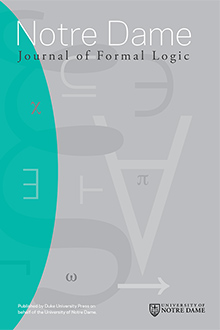Abstract
Typical applications of Hintikka’s game-theoretical semantics (GTS) give rise to semantic attributes—truth, falsity—expressible in the -fragment of second-order logic. Actually a much more general notion of semantic attribute is motivated by strategic considerations. When identifying such a generalization, the notion of classical negation plays a crucial role. We study two languages, and , in both of which two negation signs are available: and . The latter is the usual GTS negation which transposes the players’ roles, while the former will be interpreted via the notion of mode. Logic extends independence-friendly (IF) logic; behaves as classical negation in . Logic extends , and it is shown to capture the -fragment of third-order logic. Consequently the classical negation remains inexpressible in .
Citation
Tero Tulenheimo. "Classical Negation and Game-Theoretical Semantics." Notre Dame J. Formal Logic 55 (4) 469 - 498, 2014. https://doi.org/10.1215/00294527-2798709
Information





